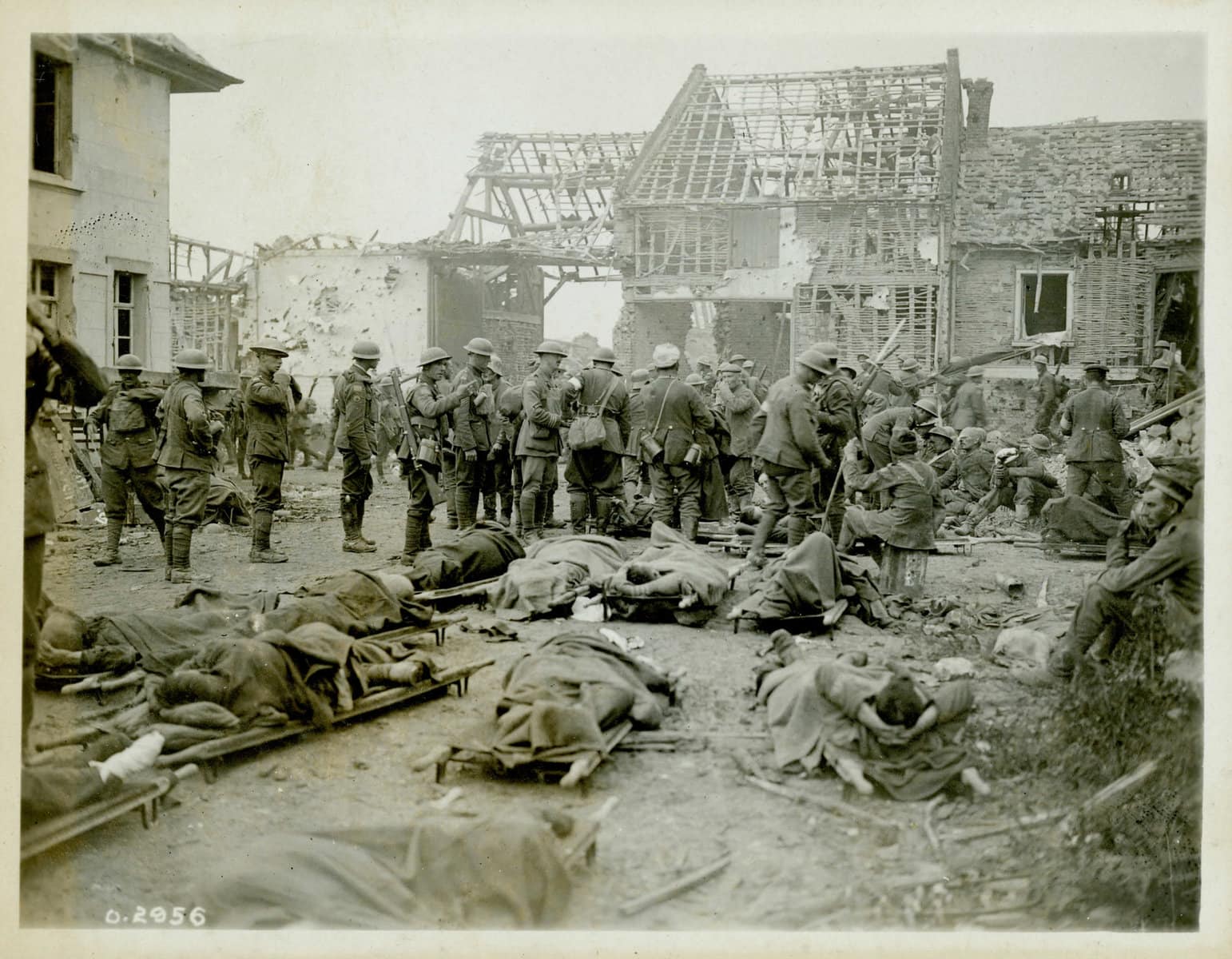It’s been a century since Niagara-on-the-Lake’s iconic clock tower cenotaph was erected. Then, in 1926, the Township of Niagara unveiled its own memorial in Queenston. In recognition of those who fought and died in two world wars and beyond, NOTL historian Ron Dale has been researching the stories of the people – all men – whose names are engraved on the two cenotaphs. This is one in a series of stories documenting and remembering the sacrifices of those commemorated on the municipal memorial in Queenston.
Ron Dale
Special to The Lake Report
It is of interest to note that the Canadian Expeditionary Force in the First World War included a high percentage of new Canadians.
Sixty per cent of the volunteers joining the First Contingent of the Canadian Expeditionary Force were born in the British Isles.
Of the 20 names inscribed on the cenotaph in Queenston, 13 of the men were born in Britain and had only recently emigrated to Canada. Among them was James Rennie.
Born in Aberdeenshire, Scotland, on March 13, 1884, he was one of the 10 children of tailor Alexander Rennie and his wife Ann Willox.
Just before James’ 17th birthday, his mother died, leaving his father to look after the six children still living at home.
James Rennie did not follow in his father’s footsteps as a tailor but worked at various jobs, including as a crew member on the Cunard Line passenger ship R.M.S. Saxonia, sailing between Liverpool and Boston.
Perhaps these trips to America encouraged him to emigrate after 1911. He settled in Niagara Township and worked as a labourer.
He also enlisted as a part-time militiaman in the 44th Lincoln and Welland Regiment, training for a couple of hours each week in the new armoury on Victoria Avenue in Niagara Falls, now home to the Niagara Military Museum.
Rennie was not a large man, standing at only a little over 5 foot 2 and was considered undersized for the First Contingent of the Canadian Expeditionary Force at the beginning of the First World War in 1914.
But he was accepted by the 98th Overseas Battalion when he enlisted in Welland on Oct. 29, 1915.
Private Rennie spent the next nine months training in Canada before finally being shipped overseas.
With his fellow soldiers he sailed on the SS Lapland from Halifax on July 16, 1916, arriving in Liverpool on July 25.
He was sent on to the Canadian training camp at Shorncliffe the following day.
After several more weeks of training, he was transferred on Oct. 6 to the 12th Battalion, a reinforcement unit, before being assigned three weeks later to the 3rd Battalion, the “Toronto Regiment,” which was already fighting in France.
Rennie arrived in France on Nov. 3 but remained in a holding camp near Le Havre until required as a reinforcement by his regiment at the front.
He finally joined the 3rd Battalion in the field on March 22, 1917. He was soon in action in the front-line trenches.
The 3rd Battalion fought throughout the bloody Battle of Arras from April 9 to May 16, 1917, including the Battle of Vimy Ridge, April 9 to 12, the Battle of Arleux, April 28 and 29, and the 3rd Battle of the Scarpe, May 3 and 4.
Four days after surviving this latter major battle, Rennie was wounded, receiving a gunshot wound in the right arm, severe enough to keep him out of action for more than a year.
He was still recovering from that wound when he was stricken with influenza on June 30, 1918.
Rennie was one of the lucky ones.
He survived not only the fierce combat of the previous year but also the deadly strain of flu, a pandemic that would eventually kill 25 million people worldwide, three time more than those who were killed in action during the war.
On July 2, 1918, Private Rennie was discharged to duty, returning to his regiment at the front in time for another major battle.
On Aug. 8 the Allies launched the Battle of Amiens, the beginning of what was known as the “100 days” that would drive the Germans back and ultimately force their surrender.
On the second day of the Battle of Amiens, James Rennie finally met his fate.
According to the military’s official report, “While taking part in the attack on Lemaire Wood, SE of Amiens, he was hit in the back by enemy machine-gun bullets. Stretcher-bearers rendered first aid and he was taken to a dressing station and evacuated to No. 5 Casualty Clearing Station where he died.”
James Rennie was buried in the Crovy British Military Cemetery, 10 miles from Amiens and is commemorated on the municipal cenotaph in Queenston.










